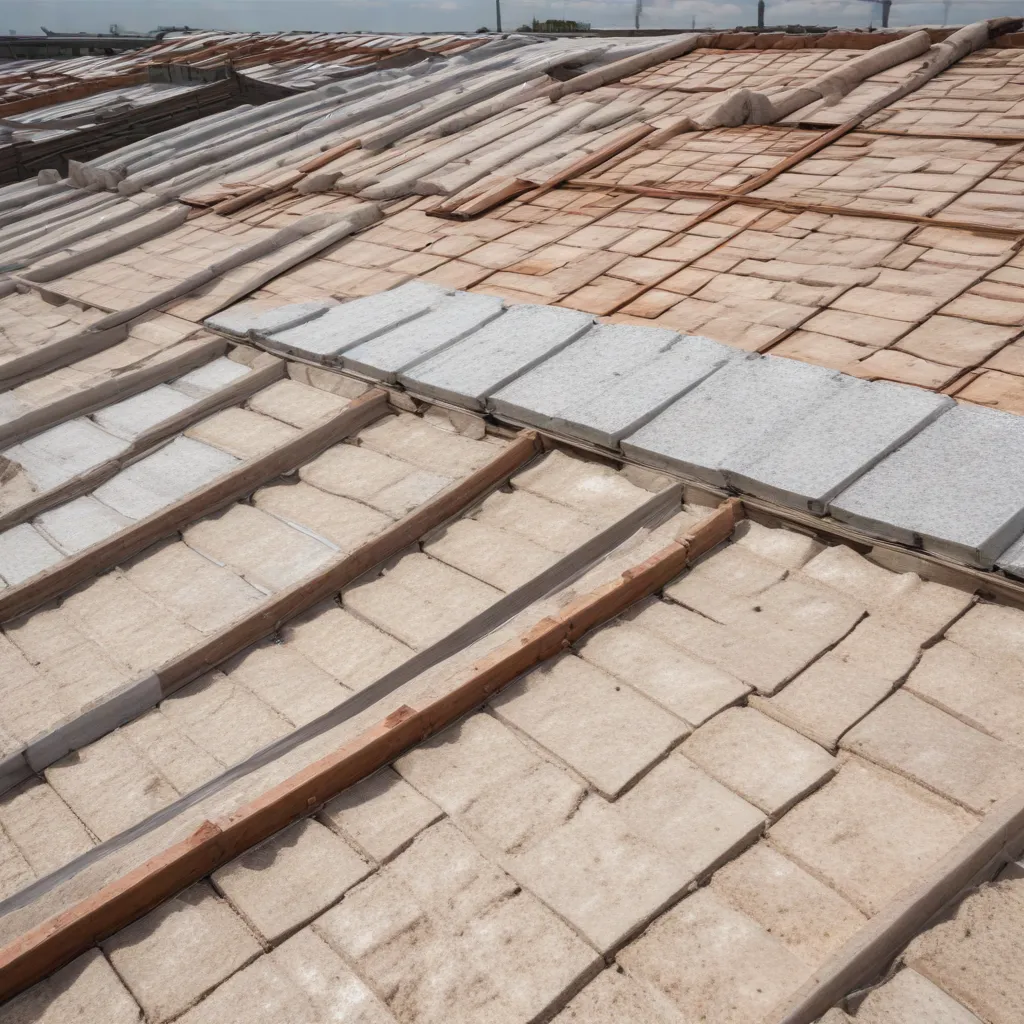
As an experienced roofing specialist at Genuine Roof Systems, I am excited to dive into the techno-economic analysis of various roof insulation strategies that can help decarbonize commercial and residential buildings in Malaysia. In a country with a hot and humid climate, the high demand for air conditioning has driven a significant 31% increase in building energy consumption over the past decade. Effective thermal insulation is a crucial step in addressing this problem and improving overall building energy efficiency.
Building Characteristics and Energy Efficiency
Building Envelope and Thermal Performance
The building envelope, consisting of the roof, walls, and fenestrations, plays a vital role in determining a structure’s thermal performance and energy efficiency. Proper insulation of the roof assembly is particularly important, as it can account for up to 25% of a building’s total heat gain or loss. Inadequate roof insulation can lead to excessive cooling or heating loads, resulting in higher energy consumption and utility bills.
Roof Insulation Materials and Properties
Various insulation materials are available for roof assemblies, each with their own unique properties and performance characteristics. These include radiant barriers, reflective insulation, mineral glass wool, and stone wool. The selection of the most appropriate insulation system depends on factors such as thermal resistance (R-value), thermal emissivity, moisture resistance, and durability.
Thermal Modeling and Simulation
To evaluate the energy-saving potential of different roof insulation strategies, we can utilize advanced building energy simulation software, such as Sefaira. These tools allow us to model the thermal behavior of buildings, taking into account factors like climate conditions, building orientation, and occupancy patterns. By simulating the annual energy consumption of buildings with various roof configurations, we can determine the most effective insulation solutions.
Techno-Economic Analysis of Roof Insulation Strategies
Cost-Benefit Analysis
In addition to the energy-saving benefits, it is crucial to consider the economic implications of investing in roof insulation. A comprehensive cost-benefit analysis can help building owners and designers make informed decisions. This analysis should take into account the initial capital costs of the insulation system, as well as the long-term operational savings from reduced energy consumption.
Life-Cycle Assessment
To further evaluate the sustainability and environmental impact of roof insulation strategies, a life-cycle assessment (LCA) can be conducted. The LCA examines the environmental footprint of the insulation materials throughout their entire life cycle, from raw material extraction to disposal or recycling. This analysis can provide valuable insights into the overall environmental performance of the insulation systems.
Payback Period and Return on Investment
A key metric in the techno-economic analysis is the payback period, which represents the time it takes for the energy savings to offset the initial investment in the insulation system. Additionally, the internal rate of return (IRR) can be calculated to determine the overall financial attractiveness of the investment. By comparing the payback periods and IRR values for different insulation strategies, building owners and designers can make more informed decisions.
Energy Savings and Environmental Impact
Reduction in Energy Consumption
The primary objective of implementing roof insulation strategies is to reduce the building’s energy consumption, particularly for cooling in hot and humid climates like Malaysia. The building energy simulations can quantify the annual reduction in cooling energy consumption achieved by various roof configurations, providing a clear understanding of the energy-saving potential.
Greenhouse Gas Emissions Mitigation
Reducing the building’s energy consumption directly translates to a lower carbon footprint and greenhouse gas emissions. By incorporating effective roof insulation, building owners can contribute to the larger goal of decarbonizing the built environment and mitigating the environmental impact of their properties.
Sustainability Considerations
Beyond the energy and cost savings, the selection of roof insulation materials should also consider their sustainability and environmental impact. Factors such as recyclability, embodied energy, and renewable content can influence the overall environmental performance of the insulation system, aligning with the principles of a circular economy and sustainable development.
Decision-Making Framework for Roof Insulation
Multi-Criteria Evaluation
When evaluating different roof insulation strategies, it is essential to consider a range of criteria beyond just the energy savings and economic factors. A multi-criteria evaluation approach can incorporate additional parameters, such as thermal comfort, fire resistance, acoustic performance, and aesthetics, to ensure a comprehensive and well-rounded decision-making process.
Sensitivity Analysis
To further refine the decision-making process, a sensitivity analysis can be conducted to understand the impact of various input parameters on the overall performance and cost-effectiveness of the roof insulation systems. This analysis can help identify the most critical factors and guide the selection of the most appropriate insulation solution.
Optimization Techniques
Advanced optimization techniques can be employed to identify the optimal combination of insulation materials and configurations that maximize energy savings, cost-effectiveness, and environmental benefits. By leveraging mathematical models and algorithms, building designers and owners can navigate the complex trade-offs and arrive at the most suitable roof insulation strategy for their specific project requirements.
In conclusion, the techno-economic analysis of roof insulation strategies presented in this article provides valuable insights to guide building owners and designers in selecting the most cost-effective and energy-efficient solutions for their projects. By incorporating effective thermal insulation, we can not only reduce energy consumption and utility bills but also contribute to the broader goal of decarbonizing the built environment. Genuine Roof Systems is committed to providing high-quality roofing products and expertise to help achieve these objectives and create more sustainable, energy-efficient buildings.
For more information on our roofing solutions and services, please visit https://www.genuineroofsystems.com.

























